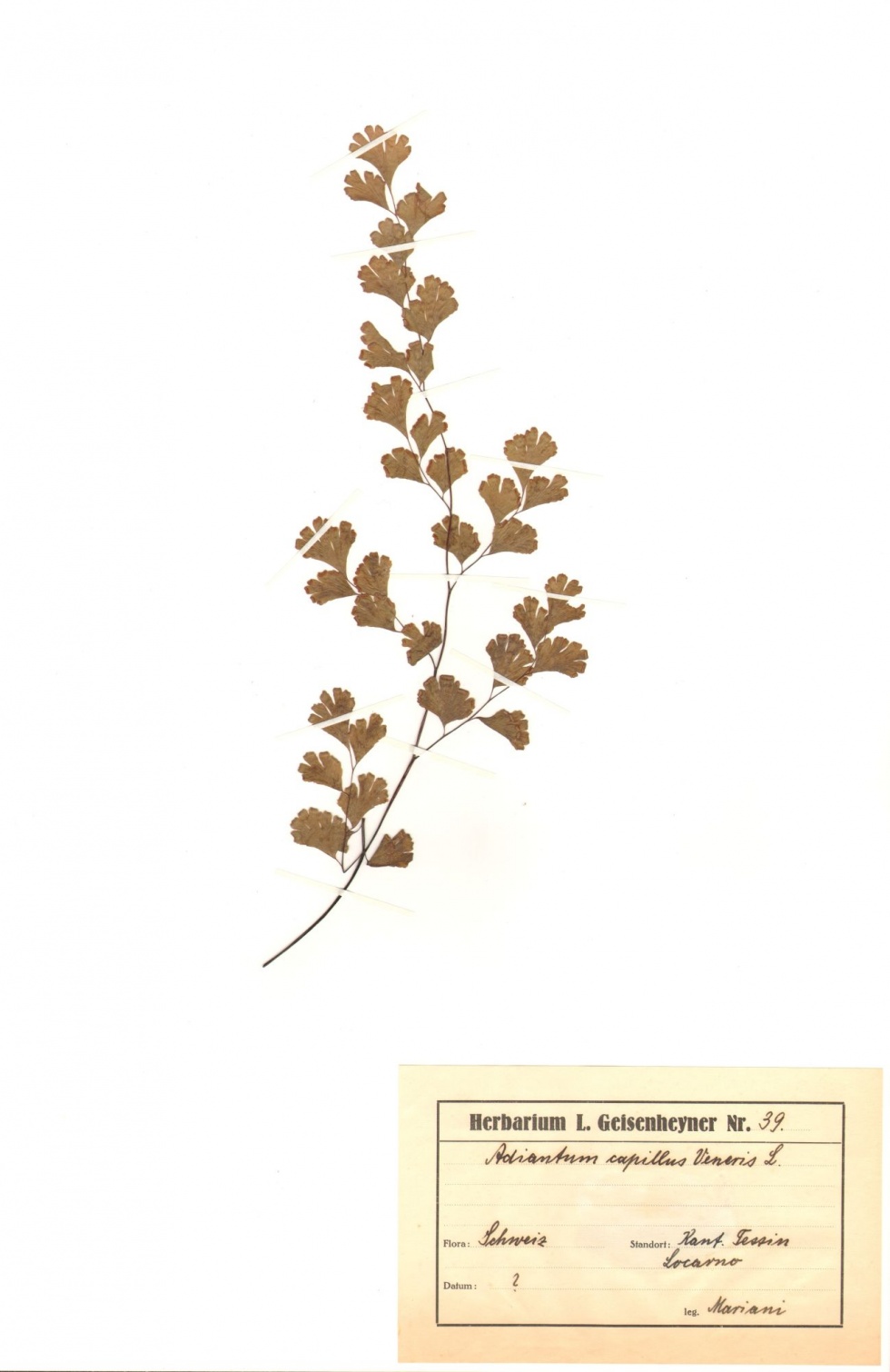Der Frauenhaarfarn - auch Venushaar genannt - ist eine der weltweit häufigsten und verbreitetsten Farnarten. Er ist die einzige Frauenhaarfarnart, die in Europa vorkommt.
Die hier gezeigten Belege stammen aus Locarno (Tessin) und wurde vermutlich um 1900 von Mariani gesammelt. Die Belege kamen offenbar im Tausch über Hermann Konrad Heinrich Christ (Basel) in das Herbarium Ludwig Geisenheyner, das heute in Teilen am Naturhistorischen Museum Mainz aufbewahrt wird.
en

